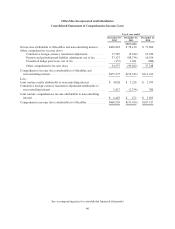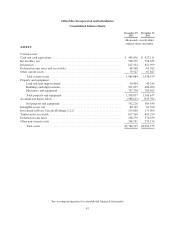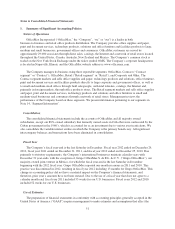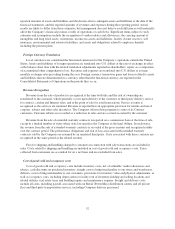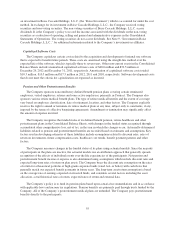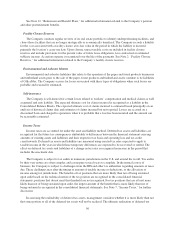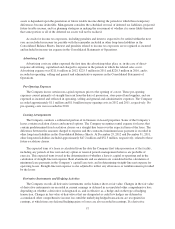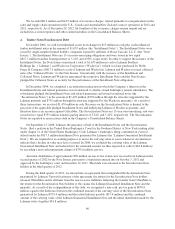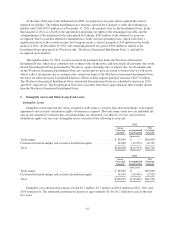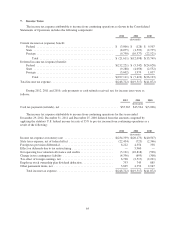OfficeMax 2012 Annual Report Download - page 92
Download and view the complete annual report
Please find page 92 of the 2012 OfficeMax annual report below. You can navigate through the pages in the report by either clicking on the pages listed below, or by using the keyword search tool below to find specific information within the annual report.See Note 12, “Retirement and Benefit Plans,” for additional information related to the Company’s pension
and other postretirement benefits.
Facility Closure Reserves
The Company conducts regular reviews of its real estate portfolio to identify underperforming facilities, and
closes those facilities that are no longer strategically or economically beneficial. The Company records a liability
for the cost associated with a facility closure at its fair value in the period in which the liability is incurred,
primarily the location’s cease-use date. Upon closure, unrecoverable costs are included in facility closure
reserves and include provisions for the present value of future lease obligations, less contractual or estimated
sublease income. Accretion expense is recognized over the life of the payments. See Note 2, “Facility Closure
Reserves,” for additional information related to the Company’s facility closure reserves.
Environmental and Asbestos Matters
Environmental and asbestos liabilities that relate to the operation of the paper and forest products businesses
and timberland assets prior to the sale of the paper, forest products and timberland assets continue to be liabilities
of OfficeMax. The Company accrues for losses associated with these types of obligations when such losses are
probable and reasonably estimated.
Self-insurance
The Company is self-insured for certain losses related to workers’ compensation and medical claims as well
as general and auto liability. The expected ultimate cost for claims incurred is recognized as a liability in the
Consolidated Balance Sheets. The expected ultimate cost of claims incurred is estimated based principally on an
analysis of historical claims data and estimates of claims incurred but not reported. Losses are accrued on a
discounted basis and charged to operations when it is probable that a loss has been incurred and the amount can
be reasonably estimated.
Income Taxes
Income taxes are accounted for under the asset and liability method. Deferred tax assets and liabilities are
recognized for the future tax consequences attributable to differences between the financial statement carrying
amounts of existing assets and liabilities and their respective tax basis and operating loss and tax credit
carryforwards. Deferred tax assets and liabilities are measured using enacted tax rates expected to apply to
taxable income in the years in which those temporary differences are expected to be recovered or settled. The
effect on deferred tax assets and liabilities of a change in tax rates is recognized in income in the period that
includes the enactment date.
The Company is subject to tax audits in numerous jurisdictions in the U.S. and around the world. Tax audits
by their very nature are often complex and can require several years to complete. In the normal course of
business, the Company is subject to challenges from the IRS and other tax authorities regarding amounts of taxes
due. These challenges may alter the timing or amount of taxable income or deductions, or the allocation of
income among tax jurisdictions. The benefits of tax positions that are more likely than not of being sustained
upon audit based on the technical merits of the tax position are recognized in the consolidated financial
statements; positions that do not meet this threshold are not recognized. For tax positions that are at least more
likely than not of being sustained upon audit, the largest amount of the benefit that is more likely than not of
being sustained is recognized in the consolidated financial statements. See Note 7, “Income Taxes,” for further
discussion.
In assessing the realizability of deferred tax assets, management considers whether it is more likely than not
that some portion or all of the deferred tax assets will not be realized. The ultimate realization of deferred tax
56


